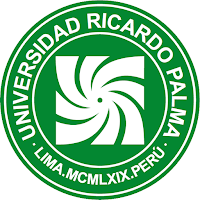The Thinking Styles in «Songs of Home» of César Vallejo
The Thinking Styles in «Songs of Home» of César Vallejo The Thinking Styles in «Songs of Home» of César Vallejo
Article Sidebar
Main Article Content
Abstract
There is not a single style in a book of poems, book of stories, novel or play. There is a plurality of styles that fight each other. Giovanni Bottiroli, on the basis of Mikhail Bakhtin’s proposal, formulates that there are three styles of thought: separative, that is rigid and suppresses the ambiguities between signifier and meaning; the distinctive, that implies a work with the oppositions and has, sometimes, a dialectic dimension; and the confusive one, that implies the triumph of the chaos in the scope of the discourse. In «Songs of Home», the three styles of thoughts struggle: the separative that is questioned by the distinctive (which implies the dialectical treatment between writing and orality in «The distant steps», for example) and the confusing (that evidences the rupture of the syntax and the embryonic presence of some avant-garde features in «To my brother Miguel», for example).
Article level metrics
Downloads
Metrics
Article Details

This work is licensed under a Creative Commons Attribution 4.0 International License.
La revista utiliza una licencia Creative Commons para mostrar a los lectores y a los usuarios cómo se pueden utilizar los contenidos publicados.
Los contenidos publicados en la revista están bajo una licencia CC-BY 4.0, la cual permite:
- Compartir, copiar y redistribuir el material en cualquier medio o formato.
- Adaptar, remezclar, transformar y construir a partir del material para cualquier propósito, incluso comercialmente.
Bajo los siguientes términos:
- Atribución. Usted debe dar crédito de manera adecuada, brindar un enlace a la licencia, e indicar si se han realizado cambios. Puede hacerlo en cualquier forma razonable, pero no de forma tal que sugiera que usted o su uso tienen el apoyo de la licenciante.
La información de licencia se muestra e incrusta en las páginas de artículos y en ficheros de texto completo como sigue:
«Este obra está bajo una licencia de Creative Commons Reconocimiento 4.0 Internacional».
Bajtín, Mijaíl (1982). Estética de la creación verbal. México D. F.: Siglo XXI.
Bosshard, Marco Thomas (2014). Churata y la vanguardia andina. Lima: CELACP/Latinoamericana Editores.
Bottiroli, Giovanni (1993). Retorica. L’intelligenza figurale nell’arte e nella filosofia. Torino: Bollati Boringhieri.
______ (1997). Teoria dello stile. Firenze: La Nuova Italia Editrice.
______ (2006). Che cos’è la teoria della letteratura. Torino: Giulio Einaudi Editore.
______ (2013). La ragione flessibili. Modi d’essere e stili di pensiero. Torino: Bollati Boringhieri.
Churata, Gamaliel (2012a). El pez de oro. Edición de Helena Usandizaga. Madrid: Cátedra.
______ (2012b). Textos esenciales. Tacna: Editorial Khorekhenkhe.
Coyné, Andrés (1957). César Vallejo y su obra poética. Lima: Letras Peruanas.
di Benedetto, Matías (2017). «El retablo como dispositivo de lectura en El pez de oro de Gamaliel Churata». Orbis Tertius, XXII, 26. Recuperado de <https://www.orbistertius.unlp.edu.ar/article/view/OTe52/8925>. (Consulta 10 de mayo de 2019).
Fernández Cozman, Camilo (2003) [1990]. Las ínsulas extrañas de Emilio Adolfo Westphalen. Segunda edición. Lima: Fondo Editorial de la Universidad Nacional Mayor de San Marcos/Dedo Crítico.
González Vigil, Ricardo (1988). Leamos juntos a Vallejo. Los heraldos negros y otros poemas juveniles. Tomo I. Lima: Fondo Editorial del Banco de Reserva del Perú.
Huamán, Miguel Ángel (1994). Fronteras de la escritura. Discurso y utopía en Churata. Lima: Horizonte.
Lakoff, George y Johnson, Mark (2003) [1980]. Metaphors We Live By. Chicago: The University of Chicago Press.
Lauer, Mirko (2001). La polémica del vanguardismo 1916-1928. Lima: Fondo Editorial de la Universidad Nacional Mayor de San Marcos.
______ (2003). Musa mecánica. Máquinas y poesía en la vanguardia peruana. Lima: Instituto de Estudios Peruanos.
López Lenci, Yasmín (1999). El laboratorio de la vanguardia literaria en el Perú. Trayectoria de una génesis a través de las revistas culturales de los años veinte. Lima: Horizonte.
Ortega, Julio (1974). La imaginación crítica. Ensayos sobre la modernidad en el Perú. Lima: Peisa.
Paoli, Roberto (1981). Mapas anatómicos de César Vallejo. Firenze: Casa Editrice D’Anna.
Rama, Ángel (1985) [1970]. Rubén Darío y el modernismo: circunstancia socioeconómica de un arte americano. Caracas: Alfadil Ediciones.
Vallejo, César (1991). Obras completas. Tomo I: Obra poética. Edición crítica, prólogo, bibliografía e índices de Ricardo González Vigil. Lima: Banco de Crédito del Perú.
Vich, Cynthia (2000). Indigenismo de vanguardia. Un estudio sobre el Boletín Titikaka. Lima: Fondo Editorial de la Pontificia Universidad Católica del Perú.
Similar Articles
- Eduardo Mijaíl Ávalos Salas, First thought, then reason: the case of Escalas (1923) , Archivo Vallejo: Vol. 6 No. 12 (2023): July - December
You may also start an advanced similarity search for this article.










